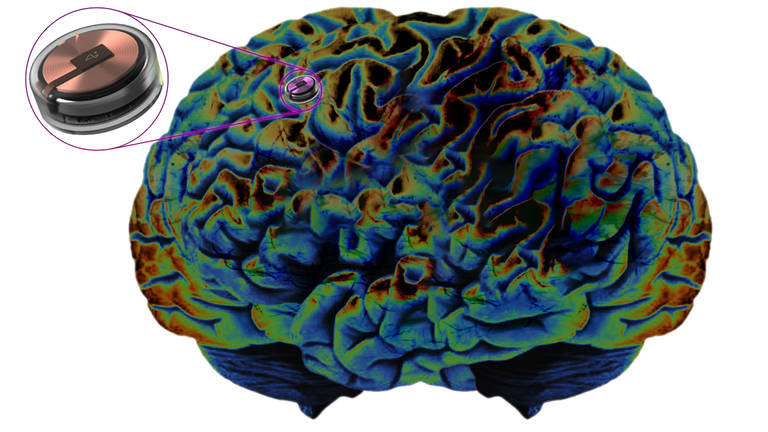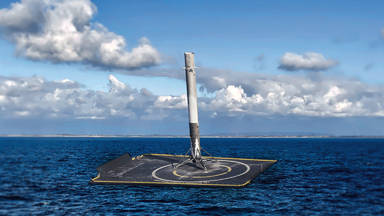
Elon Musk founded Neuralink in July of 2016, with the extremely ambitious goal of successfully creating a bridge between our brains and computers. Neuralink promises to revolutionize the way we think, work, and progress forward from helping paralyze individuals, to potentially downloading information into our brains. But aside from a few presentations here and there, we haven't heard much about the company's progress.
So what happened to Neuralink?
Although Neuralink has several applications in our day-to-day life, Elon Musk emphasized that the primary goal of Neuralink is to "solve important brain and spine problems with the seamlessly implanted device." In other words, the primary goal of Neuralink is to help with neurological medical conditions, as opposed to transforming our brains into supercomputers, although that may happen as a byproduct.
Elon Musk believes that nearly everyone has some degree of neurological shortcomings, especially as we age. This may be as mild as degrading vision and hearing, or as serious as paralysis and brain damage. However, despite the extent of this neurological damage, at the end of the day, all the signals in our brains are just electrical signals. So, theoretically fixing these electrical signals should resolve many of the affirmation issues, and that's basically the foundation of Neuralink.
With that being said, let's take a look at what Neuralink has developed. Thus far, starting with the implant. Originally, the implant was designed to sit behind your ear, kind of like a hearing aid. But later, Neuralink updated the implant to sit on the top of the skull. By making this transition, Neuralink is able to eliminate the wires that run from the device to the entry point into the skull. Aside from this, if you have decently sized hair, no one will even know you have an implant.
Although device is only 23 millimeters by 8 millimeters, It has 1024 channels per link which is 100 times better than similar neural devices. Musk claims that the current device is capable of several simple biometric tasks, such as reading blood pressure and temperature. However, in the future he hopes to expand the features to be able to detect potential heart attacks and even strokes.
Moving on to how one would actually get the implant. The process is actually quite simple, as it's all completed by high precision surgical robot. Nonetheless, for most of us, this is still a very scary idea. The Neuralink N1 implant contains up to 3072 electrodes per array which is spread across 96 threads. Each of these electrodes is thinner than one hair follicle, so the procedure shouldn't be too intrusive.
Musk believes that general anesthesia is sufficient, and that the implant will be an outpatient operation. Anyway, During the surgery, the robot will skin your brain in order to circumnavigate blood vessels, and it will essentially poke the electrodes into your brain in the appropriate places. The robot is capable of inserting 6 threads per minute, and considering that each implant has up to 96 threads, the operation itself could take as little as 16 minutes, but in practice, it will take around half an hour to 1 hour.
Once the implant is up and running, all of the data it collects can actually be exported through a USB-C cable. An interesting point here, is that the USB-C cable isn't a bottleneck, as you might expect. Our brains receive an astounding amount of information at every moment, with some research suggesting that our brains receive 11 million bits of data every single second from our senses, mostly from our eyes. However, our brains are extremely efficient at compressing all of this incoming data. In fact, the same research suggests that 11 million bits of incoming data is compressed down to less than 50 bits. Moreover, the N1 implant is only reading a very very small portion of the neural activity occurring every second. so a USB-C cable shouldn't run into any problems anytime soon.
Anyway, once the surgery is complete maintenance is pretty simple. Just charge the implant every night using a provided magnetic charger. Although it might be weird to attach a charger to your head every night. That's all cool and all, but all of that is theoretical.
How much progress has the N1 implant actually made?
The latest update we got from Neuralink was the pig demo we saw over the summer. During the demo, Elon Musk walked us through a state of three pigs. The first pig did not have an implant and he was basically a control as to how a regular happy healthy pig behaves. As for the second pig, at that point the pig had had the implant for about two months and the pig was shown to also be happy and healthy, although it wasn't interested in cooperating at the start. Using the second pig the team showcased how the Neuralink implant was able to sense streams of incoming information by playing a beeping sound every time the pig senses were provoked. Moving on to the third pig, this pig was also more of a control pig to demonstrate that the implant could be removed. In addition it showcased that the implant could be safely removed without any damage to the pig's health. This demonstration also showed that one could upgrade their implant if they so desired.
After the live demos with the three pigs was completed, Elon Musk presented us with the article of a pig with an implant walking on a treadmill. The article reveals how the data from the implant is able to quite accurately predict where the four legs of the pig were heading.
After the demos, Elon must start to discuss the possibility of using Neuralink to not only read brain activity, but also right to the brain. He details that there are three major requirements that must be met before actually implementing such a function. The first of which being precise control of the electric field. The brain is no doubt a very sensitive organ, and as a result, any current that is being stimulated into the brain should likewise be quite precise. On top of this, any sort of stimulation device should not only be precise, but also have the ability to output a wide range of different currents.
Our brain controls a variety of different activities each and every second, and different activities require different levels of stimulation. For instance, sprinting is not going to require the same amount of stimulation as blinking, and even if a given device is capable of both of these functions, the impact of the brain stimulation must be monitored over a long period of time in order to ensure that it doesn't create any lasting damage.
With that being said, Neuralink has made some progress in this realm as well. In this same presentation, Elon Musk uses a two-photon microscopy to show off how the implant can stimulate brain activity. Although he does showcase how the implant can stimulate various portions of the brain, the subsequent reaction to stimulation was not shown, likely because the stimulation was so subtle that it didn't cause any noticeable physical reactions.
As you can see, the technology is still very much in its infancy but the N1 implant did receive FDA breakthrough device designation in July. And consequently, they're looking to move over to human clinical trials as quickly and safely as possible.
Thus, Neuralink's plan is actually not that far off and we may see them succeed in helping paralyzed individuals within the next decade or two. At the same time, Neuralink also plans to translate this technology to other bodily organs. For example, by getting a better understanding of how the brain reads and processes vision and hearing, the Neuralink team may be able to restore vision and hearing, or even use cameras and mics in the place of one's eyes and ears. Of course, there is still a very long way to any of these applications.









